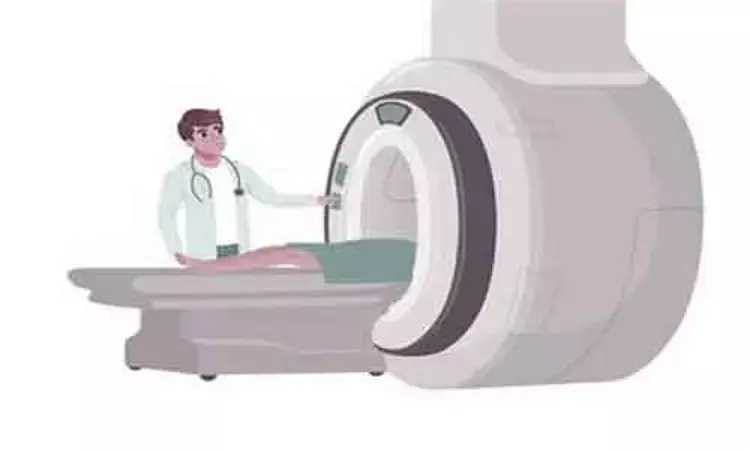- Home
- Medical news & Guidelines
- Anesthesiology
- Cardiology and CTVS
- Critical Care
- Dentistry
- Dermatology
- Diabetes and Endocrinology
- ENT
- Gastroenterology
- Medicine
- Nephrology
- Neurology
- Obstretics-Gynaecology
- Oncology
- Ophthalmology
- Orthopaedics
- Pediatrics-Neonatology
- Psychiatry
- Pulmonology
- Radiology
- Surgery
- Urology
- Laboratory Medicine
- Diet
- Nursing
- Paramedical
- Physiotherapy
- Health news
- Fact Check
- Bone Health Fact Check
- Brain Health Fact Check
- Cancer Related Fact Check
- Child Care Fact Check
- Dental and oral health fact check
- Diabetes and metabolic health fact check
- Diet and Nutrition Fact Check
- Eye and ENT Care Fact Check
- Fitness fact check
- Gut health fact check
- Heart health fact check
- Kidney health fact check
- Medical education fact check
- Men's health fact check
- Respiratory fact check
- Skin and hair care fact check
- Vaccine and Immunization fact check
- Women's health fact check
- AYUSH
- State News
- Andaman and Nicobar Islands
- Andhra Pradesh
- Arunachal Pradesh
- Assam
- Bihar
- Chandigarh
- Chattisgarh
- Dadra and Nagar Haveli
- Daman and Diu
- Delhi
- Goa
- Gujarat
- Haryana
- Himachal Pradesh
- Jammu & Kashmir
- Jharkhand
- Karnataka
- Kerala
- Ladakh
- Lakshadweep
- Madhya Pradesh
- Maharashtra
- Manipur
- Meghalaya
- Mizoram
- Nagaland
- Odisha
- Puducherry
- Punjab
- Rajasthan
- Sikkim
- Tamil Nadu
- Telangana
- Tripura
- Uttar Pradesh
- Uttrakhand
- West Bengal
- Medical Education
- Industry
Fast Breast MRIs' outperform 3-D mammograms for screening women with dense breasts

Abbreviated breast magnetic resonance imaging (MRI) detected significantly more cancers than digital breast tomosynthesis (3-D mammography) in average-risk women with dense breast tissue.
CLEVELAND: Current screening methods are technically good but over 40,000 women die each year from breast cancer. The ability of mammography to detect breast cancer is especially limited in women with dense breast tissue. Having dense breasts is not an abnormal condition; in fact, about half of all women over the age of 40 have dense breasts.
Abbreviated breast magnetic resonance imaging (also known as "Fast Breast MRI") detected significantly more cancers than digital breast tomosynthesis (3-D mammography) in average-risk women with dense breast tissue. The study has been published in the Journal of the American Medical Association.
The study compared Fast Breast MRI, which is a 10-minute MRI exam, to 3-D mammography, in women with dense breasts, because the ability of mammography to detect breast cancer is limited in these women.
UH was one of the sites that enrolled patients for the national study, which closed to new patients in the end of 2017. University Hospitals, has been offering Fast Breast MRI screenings for women with dense breasts at multiple sites in the health system since 2018 and has completed over 1,300 exams.
Read Also:Ultrasound effective in detecting breast cancer: Study
Donna Plecha, MD, Chair of the Department of Radiology at UH, said, "When screening women at average risk for breast cancer with dense breasts, the study found that Fast Breast MRIs detected significantly more (almost two and a half times as many) breast cancers as 3-D mammography. While mammography is less expensive than MRIs, it is less effective at detecting cancers in dense breasts. MRIs have been limited to women with high risk factors, but this study showed that 10 minute MRIs were more effective than 3-D mammograms at finding cancers in dense tissue in women of average risk."
Currently, Fast Breast MRI is not covered by insurance and has an out of pocket cost of $250. "Our hope is that this study will help insurers see the benefit of the new test to improve early detection of breast cancer," said Dr. Plecha, although she said more research needs to occur on its cost-effectiveness and impact on reducing deaths from breast cancer.
UH was part of the ECOG-ACRIN Cancer Research Group (ECOG-ACRIN) which designed and conducted the study with funding from the National Cancer Institute, part of the National Institutes of Health, and Bracco Diagnostics Inc. (Monroe Township, NJ).
Despite current screening methods, more than 40,000 women die annually from breast cancer. The ability of mammography to detect breast cancer is especially limited in women with dense breast tissue. Having dense breasts is not an abnormal condition; in fact, about half of all women over the age of 40 have dense breasts.
Women in the study were between the ages of 40 and 75, had dense breasts on their prior mammogram, and did not currently have breast cancer or any clinical symptoms. A total of 1,444 women were in the study, all of whom were screened with both 3-D mammography and Fast Breast MRI within 24 hours. Participants were screened twice in the study, first as a baseline and again after one year, and are being followed for three additional years.
Read Also: Even a moderate amount of dairy milk increases breast cancer risk
Medical Dialogues Bureau consists of a team of passionate medical/scientific writers, led by doctors and healthcare researchers. Our team efforts to bring you updated and timely news about the important happenings of the medical and healthcare sector. Our editorial team can be reached at editorial@medicaldialogues.in.


